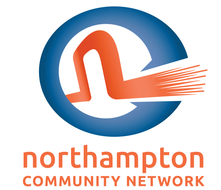Last November, 91.3% of Northampton voters gave the city permission to create a municipal light plant (MLP).
An MLP is the entity that would establish and manage a municipal/community network for the city. It’s now likely to happen not only because of the vote, but also because new Mayor Gina-Louise Sciarra has said she is 200% behind the idea.
The second phase, a feasibility study, is underway. It is looking at estimating the costs of creating and maintaining a city network. A report from the contractor Design Nine is expected by April. In the report for the first phase of the study, back in October, one idea that was suggested for how to structure a municipal network was “Infrastructure as a Service”.
The Infrastructure as a Service model
Infrastructure as a Service (IaaS) is a model for some municipal networks, including the city of Ammon, Idaho which has famously low prices for its subscribers.
The City of Ammon hooks you up. You go to a portal web page where you pick your ISP. You might see prominent national ISPs on the page like Comcast, Verizon, Charter and Century Link. Pick Comcast and it might seem like you never left it, except hopefully you will have 1 gigabit per second (gbps) upload and download speeds. This model also allows smaller ISPs, particularly WISPs (wireless internet service providers), to expand into new markets.
This model is used by some utilities. National Grid provides power to your home, but you have the option to select where the electricity comes from. You may prefer green energy suppliers providing solar or wind power. National Grid essentially offers IaaS too, although they still run their own power plants, as they are the electricity provider of last resort.
The idea of IaaS is that just as the government provides roads, bridges and airports available to all, it should not discriminate on who can provide the internet services on its network providing they obey the network’s rules.
There’s a difference though between offering an internet service (like a Google search) and being an ISP. An ISP controls what content is delivered to your devices and can be sent from it. With this model, the City provides the infrastructure (fiber to the home, perhaps) and the ISP delivers your Internet content.
In the case of Ammon, Idaho, subscribers pay a charge to connect to use the city’s network infrastructure and a charge to the ISP that will deliver the content. In the case of Northampton, the network charge would go to the Municipal Light Plant. The charge to receive content goes to the ISP.
If you are unhappy with your ISP, you can select a different one from a portal page. Each ISP on the network sets the rate they will charge to deliver your internet content.
Below are some advantages and disadvantages to the Infrastructure as a Service model.
Advantages to Infrastructure as a Service
- Costs can be lower, since it opens the network to competition. You can select an ISP based on price, download speed, or specialized services available on an ISP’s network.
- The City could charge ISPs to access the network, setting up a revenue stream to help support the network
- If you are unhappy with your ISP, you can pick a new one from the network’s portal page and the change could be instantaneous.
- The City may not have to buy bandwidth from commercial companies. Instead, they could provide an entry point to the ISP to the city’s network. In such a system, the ISP would be responsible for procuring the backend bandwidth they need to deliver the content.
Disadvantages to Infrastructure as a Service
- Fixing problems could turn into a finger pointing situation. Is an issue with the network or with the ISP? It is possible subscribers will expect the City to fix problems outside of its control.
- There is no guarantee there will be many ISPs on the network. With this model an ISP has to compete, either by lowering prices, offering services worth paying for, or some combination of both. The Ammon network has lost ISPs on its network since its inception, as some ISPs have not found it to be profitable.
- Since ISPs are likely for-profit entities, they would need to figure out a profitable business model. Raising prices would give incentive to network users to move to another ISP. So they will likely want to track your internet usage to monetize information on you. This would undercut one of the advantages many subscribers would expect of the network: enhanced privacy. The MLP would need to make rules and enforce them to keep this from happening.
- No net neutrality? The ISP may choose to give preference to certain content providers over others. However, the contract with the City could require that ISPs not do this.
- Possibly higher costs if the city has to purchase the bandwidth needed to connect to major network trunks on the internet.
- Quality of service could be problematic. An ISP ultimately controls how quickly content is sent or received. While the City’s network may be engineered to offer 1 gigabit per second (gbps) upload and download, for a lower price the ISP may provide much slower upload and download speeds. The city would need to regularly monitor this to assure customers are getting the advertised bandwidth.
It’s clear in the months ahead, the City will have a lot of choices to make. We’ll blog again soon about other potential municipal network models and the strengths and weaknesses of each.

[…] our last post, we looked at the Infrastructure as a Service (IaaS) model for municipal networks. With this model, […]